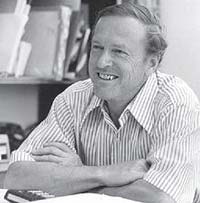
| Born: May 22, 1920 in Vienna, Austria |
| Died: Jun 22, 2004 (at age 84) in Ithaca, New York |
| Nationality: Austrian, British, American |
| Famous For: Steady state theory, origin of abiogenic petroleum |
| Awards: John Frederick Lewis Award (1972), Humboldt Prize (1979), Gold Medal of the Royal Astronomical Society (1985) |
Thomas Gold was an astrophysicist and a professor of astronomy. He was also a member of the renowned National Academy of Sciences in the United States and a Fellow of the Royal Society in London. Gold was among three Cambridge scientists who proposed the theory of the steady state of the universe in the year 1950. Thomas’ work crossed scientific and academic boundaries into astronomy, geophysics, aerospace engineering and biophysics.
Gold’s Early Life
Thomas was born in 1920 in Vienna and attended the school at Lyceum Alpinum Zuoz located in Zuoz, Switzerland. He finished his schooling in 1938 and entered Trinity College in 1939 to study mechanical sciences. He graduated with a degree in 1942. Gold worked as an agricultural lumberjack and laborer in England. He later joined Fred Hoyle and Bondi on a naval research into ground clutter neat Dunsfold.
Thomas Gold’s Career Highlights
Gold and his friends spent their off duty hours in discussion on topics like mathematics, cosmology, and astrophysics. In a matter of months, Gold was put in charge of construction of new radar systems. He determined how the landing of craft could make use of radar in its navigation to a good landing spot on the D-Day. He discovered that the navy from Germany fitted snorkels to the U-Boats, hence making them operational underwater while getting air from the surface above.
Contribution to Astronomy
Thomas Gold sparked a controversy when he said that the surface of the moon was covered by a fine powder. In 1969, he was vindicated when the Apollo 11 group brought samples of lunar soil back to earth for research. Analysis proved that the soil was powder and each grain was layered by a thin metal coating which was caused by the penetration of wind. Gold designed the stereo camera which was carried to the lunar surfaces by the astronauts from the US.
Another theory by Gold that was believed to be true was his theory of pulsars. It stated that astronomical objects produce regular pulses of radio waves. He suggested that pulsars are actually neutron stars which emit these radio waves as they spin. His view was ignored at first, but it was later accepted after the finding of one pulsar in Crab Nebula.
Gold as an Author
Thomas Gold wrote a book in 1998 entitled The Deep Hot Biosphere. In this book, he stated that coal and oil are not remainders of an ancient life which became buried and underwent high pressures and temperatures. He argued that these deposits were produced from hydrocarbons dating to when the earth was created.
He further stated that the volatile gases migrated to the top of the earth through the cracks in the crust and leaked into the atmosphere either as methane or became trapped in the sub surface and became oil, coal, or tar after they lost hydrogen.
Gold’s Personal Life
Thomas Gold received several honors for the work he completed during his lifetime. He also served in the President’s Advisory Committee of Science. He had two marriages; the first one with Merle and the second one with Carvel. He had four daughters form both marriages. Thomas Gold died of heart disease in 2004. He was age 84.